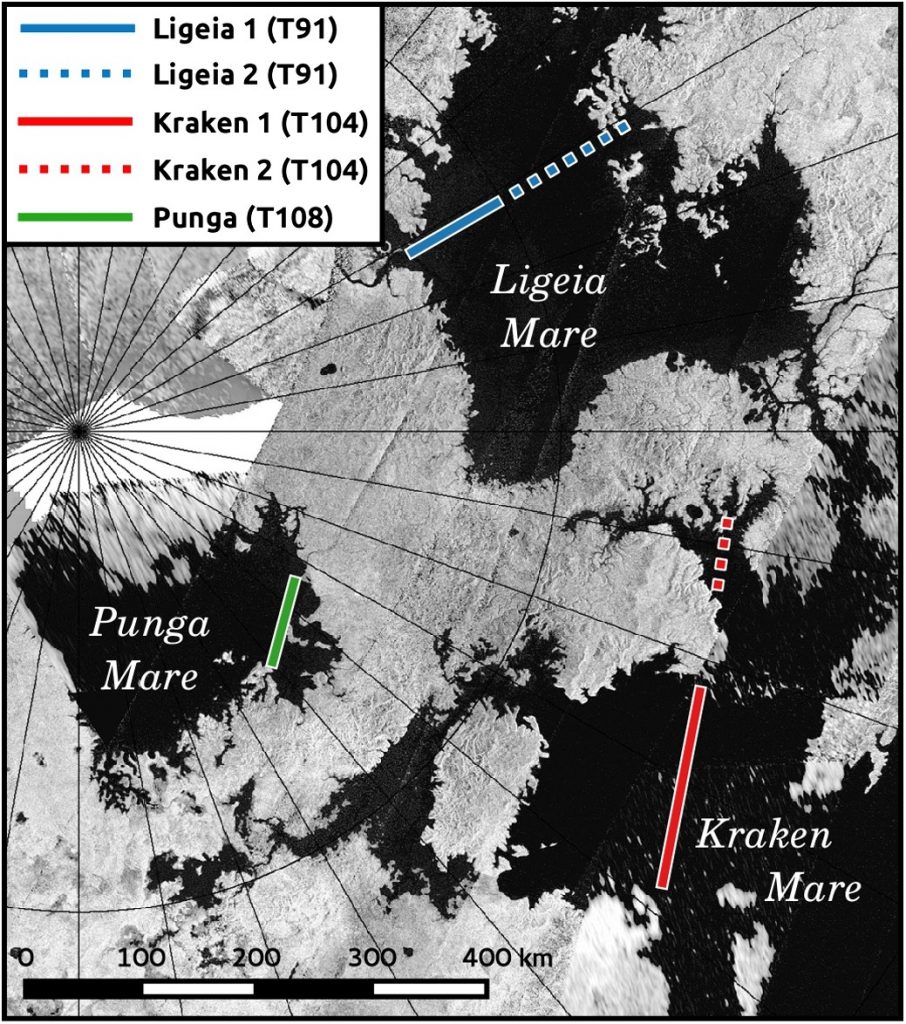Tranquil liquid methane lakes could mean smooth landing on Titan
Titan has long been captivating our imagination as scientist believe that Saturn’s moon contains the basic ingredients for life. One fascinating feature about Titan is the liquid methane lakes and scientists are considering sending a probe to take a closer look. But while previous predictions said that landing a probe on Titan is a challenge due to high winds, astronomers form Texas University say that it could be smooth sailing for Earth vehicles on Titan’s liquid methane lakes.
Titan, Saturn’s largest moon and the one place in our solar system that is believed to have all the necessary ingredients for life. Titan is primarily composed of water ice and rocky material, it has a surface but until the Cassini probe, we had little idea of what lied underneath this moon’s dense opaque atmosphere.
But thanks to Cassini and its radar, we now know of the icy crust and also about the methane lakes, about the complex atmosphere and the methane and ethane that fall from the sky as rain.
“The atmosphere of Titan is very complex, and it does synthesize complex organic molecules–the bricks of life,” Cyril Grima, a research associate at the University of Texas Institute for Geophysics said. “It may act as a laboratory of sorts, where you can see how basic molecules can be transformed into more complex molecules that could eventually lead to life.”
This is why scientists want to send a probe to Titan and according to the study lead by Cyril Grima, it could be a smooth landing for our vehicles.
Scientists believe that Titan has high winds but the research form Austin has found that most waves on Titan’s lakes reach only about 1 centimeter high, a finding that indicates a serene environment that could be good news for future probes.
“There’s a lot of interest in one day sending probes to the lakes, and when that’s done, you want to have a safe landing, and you don’t want a lot of wind,” said Grima, who is the lead author of the research. “Our study shows that because the waves aren’t very high, the winds are likely low.”
The scientists concentrated of images sent by Cassini’s radar of the three large methane lakes in Titan’s northern hemisphere: Kraken Mare, Ligeia Mare and Punga Mare. Analyzing the date, the scientists showed that waves on all three lake are only about 1 centimeter high and 20 centimeters long.

“Cyril’s work is an independent measure of sea roughness and helps to constrain the size and nature of any wind waves,” said co-author Alex Hayes, an assistant professor of astronomy at Cornell University. “From the results, it looks like we are right near the threshold for wave generation, where patches of the sea are smooth and patches are rough.”
The information is essential if we are to plan for a future mission on Titan. The results call into question the early summer’s classification as the beginning of the Titan’s windy season, Grima said, because high winds probably would have made for larger waves.